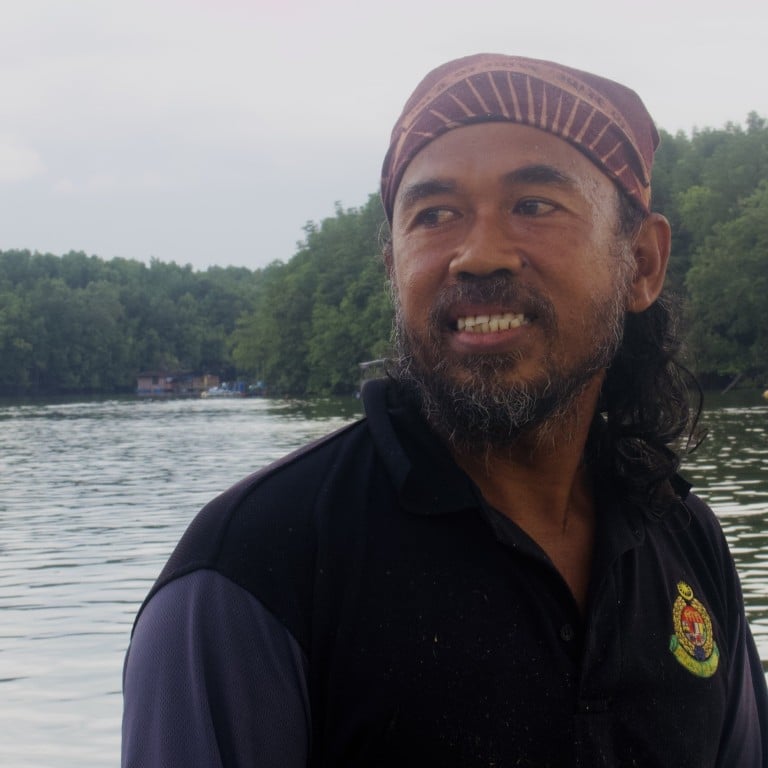
Malaysia’s artisanal fishermen suffer net losses as climate change hits livelihoods
- Rising water temperatures brought on by climate change forced some fish and crab species to other areas – places some fishers cannot easily access
- A decade ago, fishers in Mukim Tanjung Kupang could catch 30kg of crabs in a single morning, now they’re lucky to bring home a quarter of that
Thirty years ago, fishermen in Mukim Tanjung Kupang could go out for their morning catch and return with kilos of crabs and prawns, earning hundreds, sometimes thousands of ringgit a week.
Now, they barely come back with a kilo of seafood.
The experts at sea in Johor now wash boats to earn a living, losing their livelihoods to severe storms and unpredictable weather.
Local fishermen like Indasari Othman, 46, say that when they are out at sea, they have no choice but to drift on their fibreglass vessels.
These 12-foot boats cannot be anchored to secure them from large waves and all the fishers can do is switch off their 700cc engines and coast.
“Like it or not, we have to drift with the waves and wind to look for 1,000 ringgit [in seafood], but if we’re half-dead, what is the point? It’s dangerous so we might as well head back home,” he says.
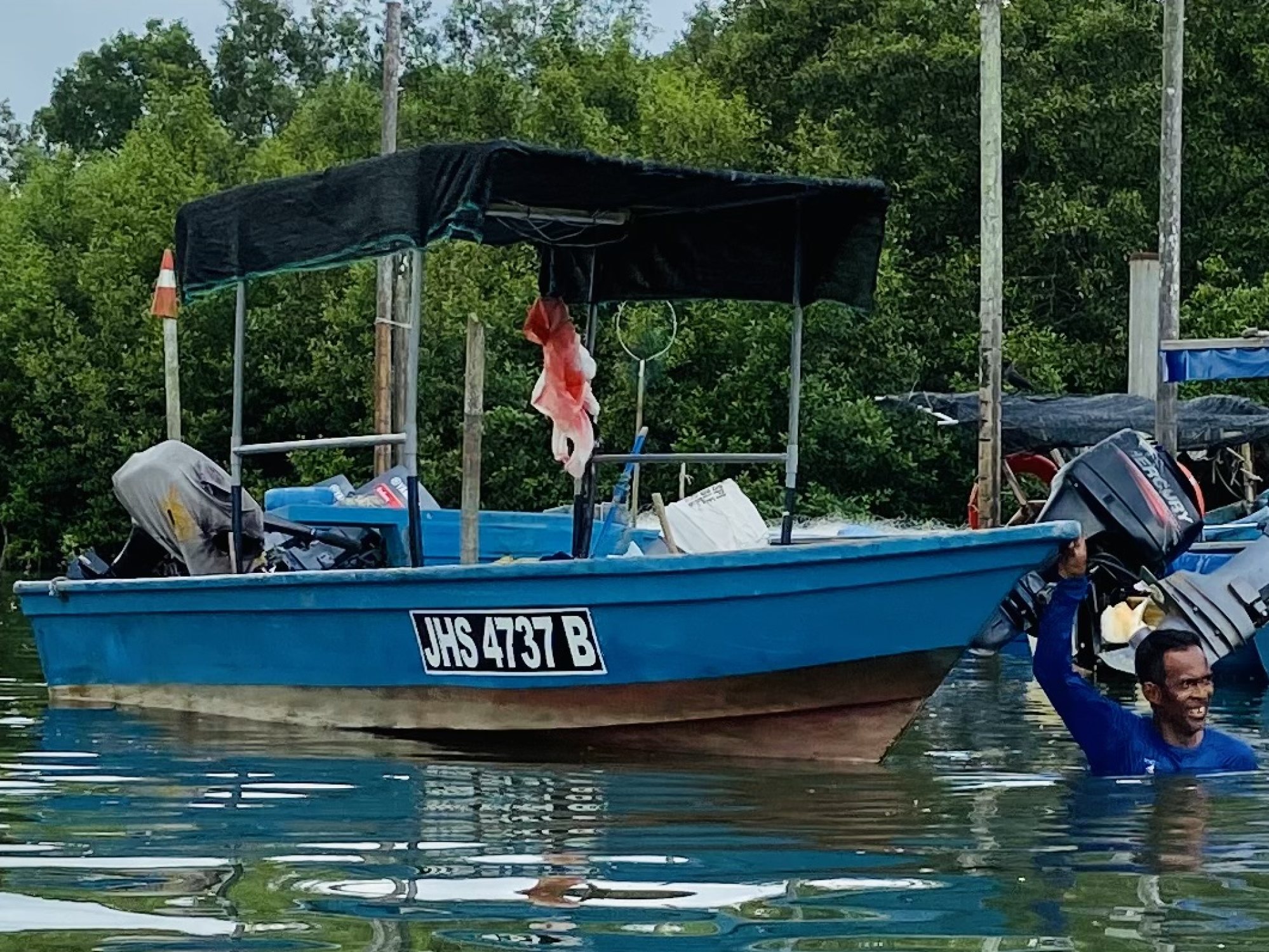
Understanding the limits of his boat, Indasari now resorts to washing other boats or working odd jobs like plumbing to make money to feed his family of six.
He waits by the jetty when the weather is bad, hoping for someone to offer him some work.
“I get 20 ringgit (US$4.50), sometimes 30 ringgit for washing boats, so that’s one way for me to make some money,” Indasari says. “When I cannot go out to sea, I can’t even bring back some catch for my family so that’s additional spending on food for the day.”
Crab fisherman Muhamad Jainuddin Mohd Rosli, 47, grew up in the fishing village and has spent his entire life as an artisanal fisherman.
At 17, he could take his small boat out to the nearby coastline to get his daily catch easily, but now he has to ride out for 30 minutes and hope the weather does not change too quickly.
“We used to be able to pull up our nets when the bad weather is approaching, but now we just leave it and head to safety first,” Muhamad Jainuddin says.
Malaysia has a long coastline, so why’s it hell-bent on artificial islands?
Communities at risk
Experts warn that these artisanal fishermen are at risk as coastal communities experience the severe impacts of climate change, through increasing sea levels, and the changing shape of coastlines.
“In the past, they would tell me the winds were quite steady and a certain species of fish or crab would come in. Now, the winds could change every day – or, in one day, it has changed directions up to three times – so they’re hustling to pull up their nets and cast them somewhere else, but they’re also trying to save themselves,” says Serina, a conservation scientist and environmental anthropologist.
According to her report, The Endangered Malaysian Artisanal Fisherman: Battered by Climate Change and Covid 19, the weather changes have reduced the fishermen’s ability to go to sea because their smaller boats cannot withstand storms and high tides.
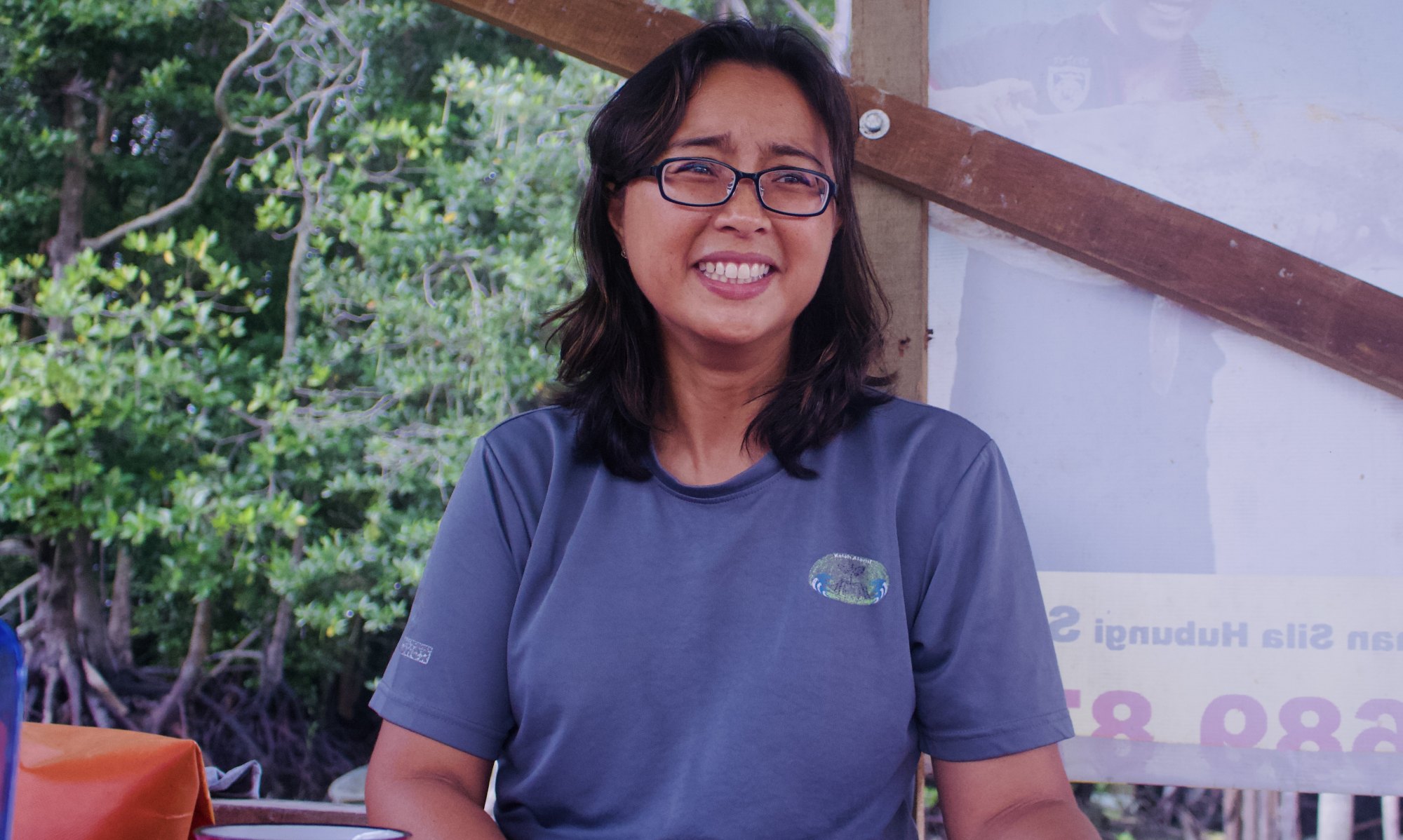
Rising temperatures drive fish away
Rising water temperatures brought on by climate change have forced some fish and crab species to other areas – but the fishermen attribute the migration to water currents.
Universiti Putra Malaysia Institute for Social Studies released a report Adapting towards climate change impacts: Strategies for small-scale fishermen in Malaysia indicating temperatures in the country have increased between 1.75 per cent and 2.69 per cent over the last 50 years.
Experts predict a further rise of between 0.6 per cent and 4.5 per cent by 2060, with areas close to the sea expected to bear the brunt of the temperature changes.
Serina says the impacts of climate change are inevitable, it is “going to happen, it is going to hit you and it is not something you can stop”.
We cannot do alternative work because we only know how to fish
Muhamad Jainuddin recalls going out to sea 10 years ago and bringing home up to 30kg of crabs in a single morning.
Nowadays, he brings back an average of 6kg. “We cannot do alternative work because we only know how to fish. So what else can we do but to wait until the storms go away?”
Finances are also a factor, he says. “We use different nets to catch various seafood in the ocean, it’s all expensive and we don’t have the money to buy these nets.”
Besides the nets which cost up to 2,000 ringgit (US$645), boats run upwards of 14,000 ringgit and an engine can fetch as much as 12,000 ringgit.
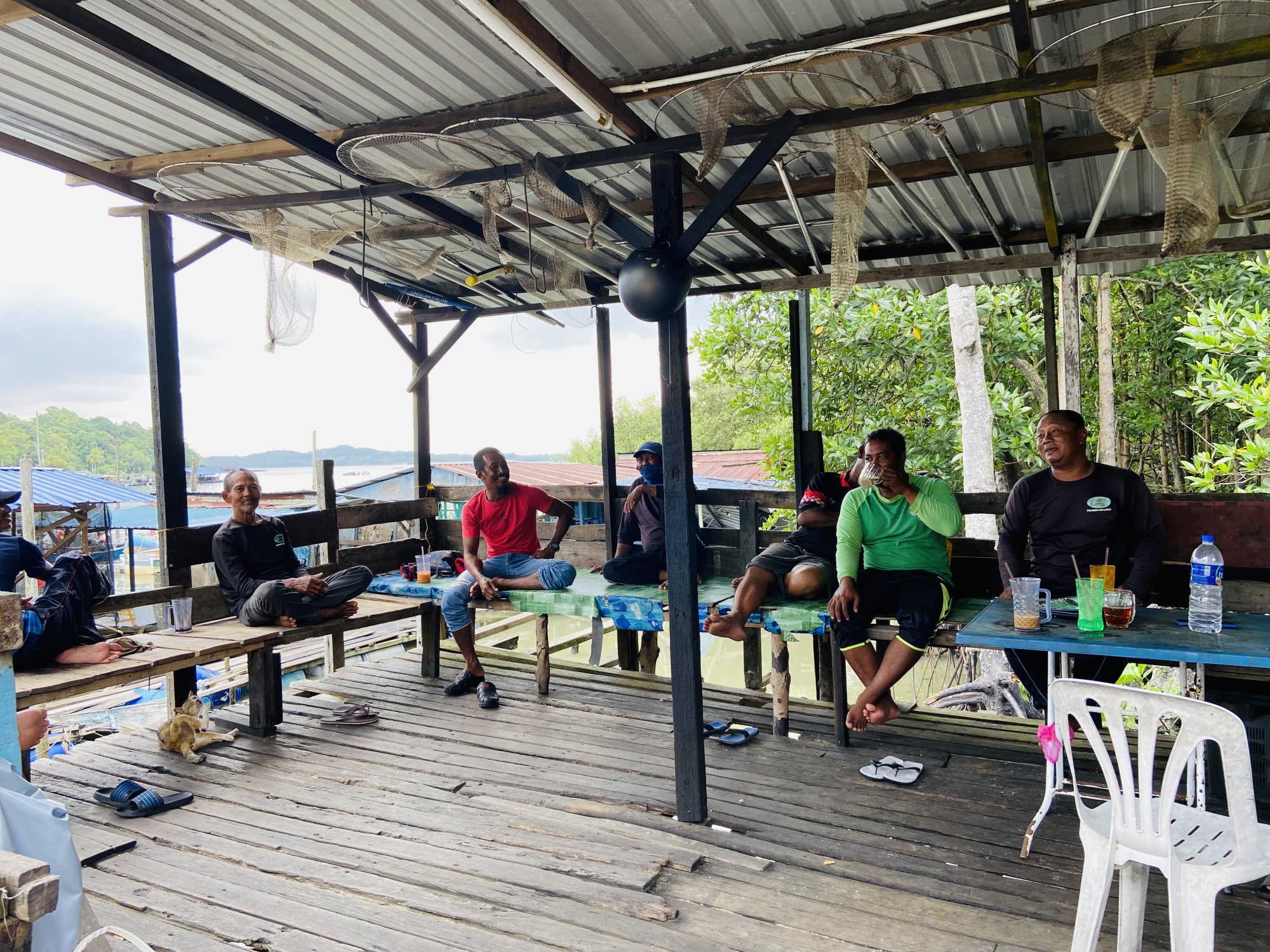
Crab fishermen can make their own nets but prawn fishermen buy them from specialised craftsmen monthly because the nets are damaged at sea.
Kelab Alami, a local heritage and nature club founded by local fisherman Shalan Jum’at and Serina, provides fishermen with support to rebound from the low fish landings.
“We provide them with more types of nets so instead of focusing on one species they can go for others as well. So we make sure they are given a fair price to help them earn more,” she says, explaining the fishermen used to sell a kilogram of crabs for 8 ringgit but can now earn 13 ringgit a kilogram at their fishermen-run Pendekar Laut market.
Foundation and ‘way forward’
Serina says because of the damage and impact that large-scale trawling have on marine life and the environment, artisanal fishermen are the solution to more sustainable fishing.
That said, artisanal fishing can also bring problems such as overfishing when too many boats concentrate in an area.
“This causes overexploitation of already limited resources and that is not good,” she says, adding that there needs to be more communication and consultation on ways forward with communities at risk like Mukim.
Besides offering eco-tourism activities and ferrying cyclists across the river, these fishermen are essentially unrivalled experts at sea thanks to their “priceless knowledge”.
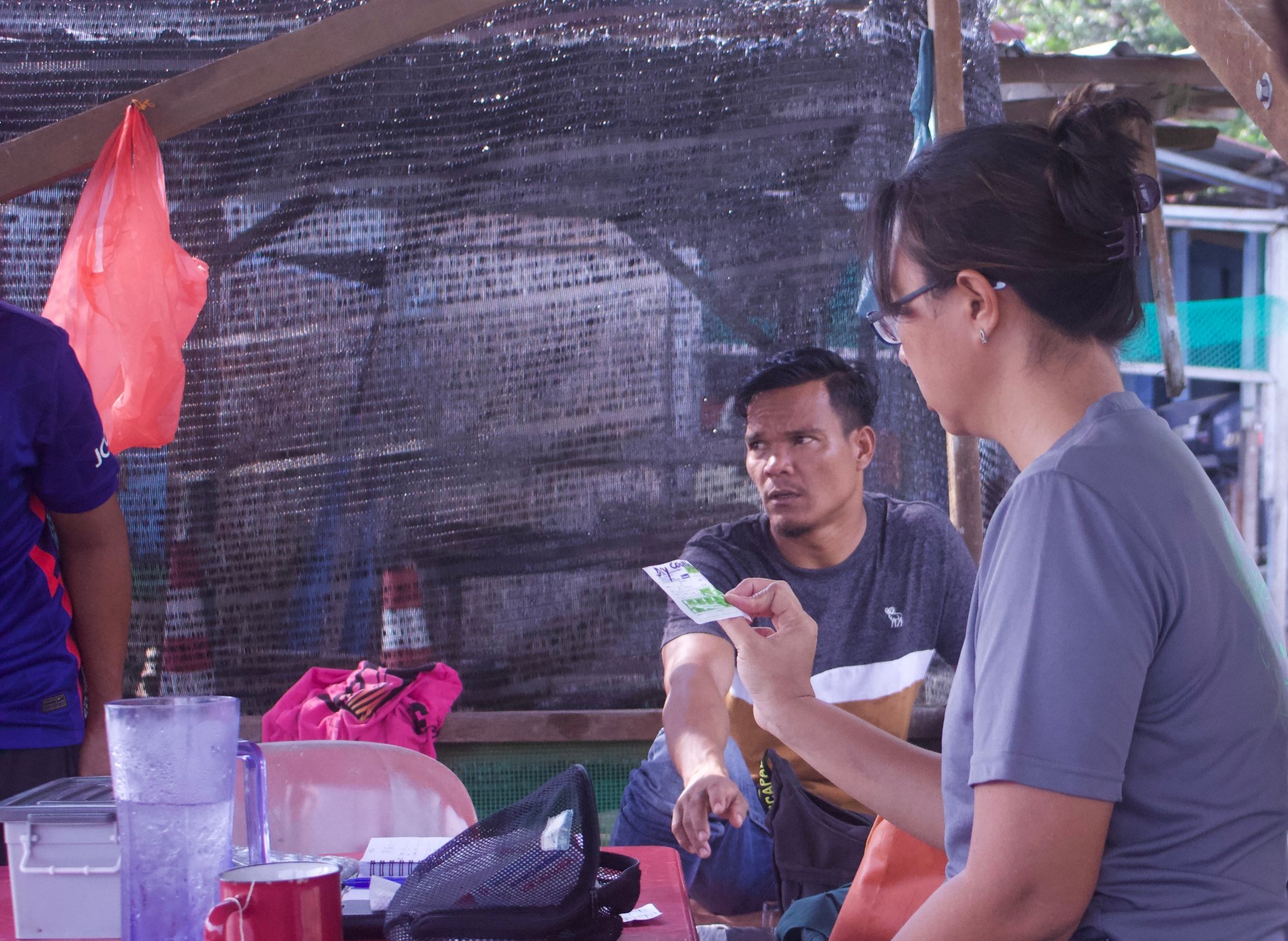
Local studies have consistently found that artisanal or small-scale fishermen make up more than 65 per cent of the overall fishing population.
These fishermen fall under the Malaysian Fisheries Department classification of inshore or nearshore fishermen and their importance is highly underestimated.
Malaysia has 4,657km of coastline and nearshore fishing has been the “backbone of the coastal communities throughout the ages”.
Artisanal fishermen have been the base of fishing all over Southeast Asia, where fishing villages formed the foundation of societies and communities.
“These were the foundation – the coastal villages, the inland fisheries – this is the basis of our people and if we allow them to disappear because now the fishermen are more endangered than the fish, we lose all that heritage,” says Serina.
This story was supported by the Earth Journalism Network and Climate Tracker.

